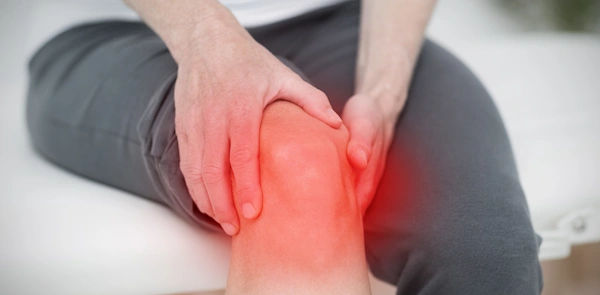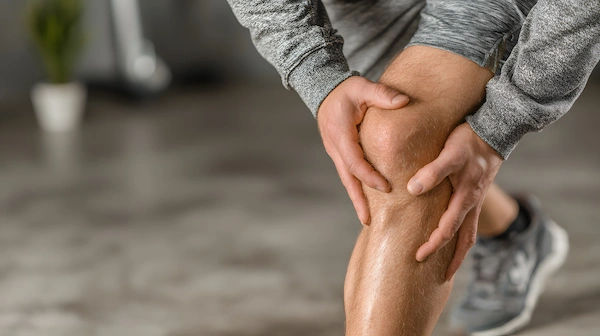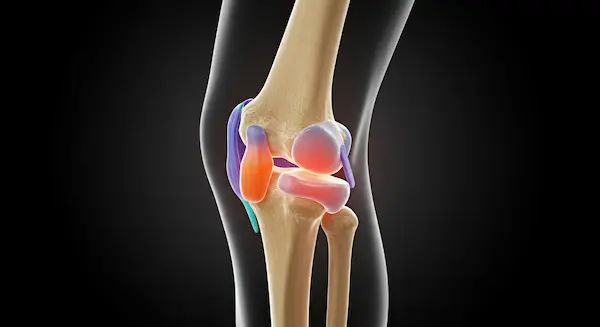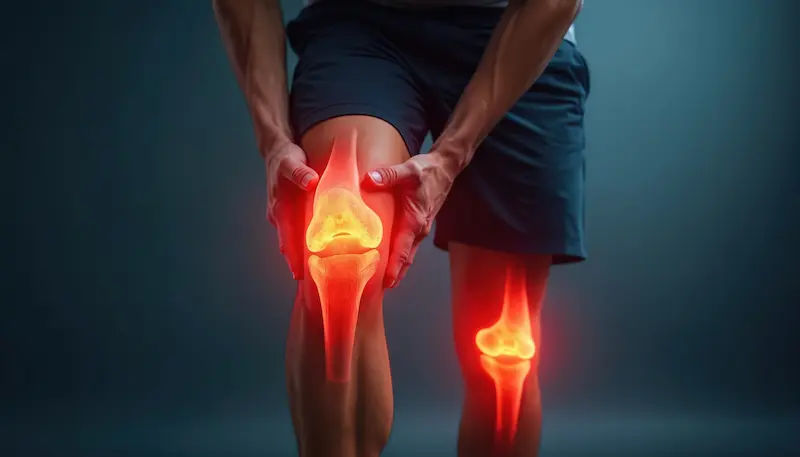Guide to Prp Injections For Joint Pain
Platelet-rich plasma (PRP) injections use your own blood to support tissue repair and reduce joint pain. Discover how PRP works, who may benefit, risks, costs, results, and how to maximise recovery.

Written by Dr. Mohammed Kamran
Reviewed by Dr. Rohinipriyanka Pondugula MBBS
Last updated on 30th Oct, 2025

Introduction
If joint pain is holding you back, you’ve probably heard about PRP injections. PRP stands for platelet-rich plasma, a treatment that uses a small sample of your own blood to concentrate platelets—cells packed with growth factors—and injects them into a painful joint or tendon. The aim is to reduce pain and help tissues heal themselves.
This guide translates the science into clear language, helping you decide if PRP is right for you. We explain how PRP injections work, which kinds of joint pain may improve, what research shows, how PRP compares with steroid or hyaluronic acid injections, what to expect before and after the procedure, side effects, cost, and how to choose a qualified provider. You’ll also get tips to boost results and important questions to ask your doctor.
We draw on respected clinical guidance and recent studies with balanced takeaways. If symptoms persist or you need tailored medical advice, you can consult a doctor online with Apollo24|7 for further evaluation.
PRP Injections
Understanding the basics helps you make informed choices.
Consult a Top Rheumatologist for Personalised Advice
What is platelet-rich plasma?
Platelet-rich plasma is a small quantity of your own blood processed to greatly increase platelet concentration. Platelets do more than help clotting—they release growth factors and chemical signals that support tissue repair. Injecting PRP into a joint or tendon aims to reduce inflammation and promote healing activity.
How PRP is prepared (blood draw to centrifuge)
The process usually takes 30–60 minutes:
- Blood is drawn from a vein in your arm.
- It is spun in a centrifuge to separate layers and isolate the platelet-rich portion.
- PRP is collected into a syringe, ready for injection.
- It is injected into the target area—often guided by ultrasound for accuracy.
Growth factors and how they may reduce pain
PRP contains growth factors such as PDGF, TGF-β and VEGF, which may:
- Support collagen repair in tendons and cartilage
- Improve the joint environment
- Reduce inflammatory signals
Many notice improvements over several weeks, though responses vary based on the condition and PRP method used.
Who Might Benefit
Certain joint and tendon conditions respond better than others.
Knee osteoarthritis (early to moderate)
PRP can reduce pain and stiffness in mild-to-moderate osteoarthritis (OA), often with effects that build over 4–12 weeks
and can last several months. It is less predictable in severe “bone-on-bone” OA. Some use PRP to delay or avoid
surgery alongside weight management and strength training.
Tendinopathies: tennis elbow, plantar fasciitis, patellar and gluteal tendons
Chronic tendon pain commonly treated with PRP includes tennis elbow, plantar fasciitis, patellar tendinopathy and
gluteal tendinopathy. PRP may provide longer-lasting relief than steroid injections for some people, especially after
6–12 months. Physiotherapy is essential to support tissue remodelling.
Shoulder pain (partial rotator cuff tears)
Some people with partial-thickness tears or subacromial pain report symptom improvements. PRP is unlikely to help
full-thickness tears needing surgery.
When PRP is less likely to help
- Advanced OA with severe cartilage loss
- Widespread non-specific pain conditions
- Structural problems requiring surgical correction
In such cases, other treatments may be more suitable.
What the Evidence Says
Studies show potential benefits but also variability.
Knee osteoarthritis: mixed outcomes
Some studies show PRP can outperform hyaluronic acid or placebo on pain and function for knee OA, particularly in
the short to intermediate term. Others find no meaningful difference. Differences in PRP preparation and patient
selection explain much of this inconsistency. Medical organisations differ in their recommendations, reflecting ongoing uncertainty.
Elbow and plantar fascia: more consistent long-term results
For tennis elbow and plantar fasciitis, research suggests PRP may provide better long-term outcomes than steroids.
Steroid injections often help quickly, but effects may fade, whereas PRP tends to build gradually and last longer.
Why studies disagree
Key factors include:
- Type of PRP (leukocyte-poor vs leukocyte-rich)
- Single vs multiple injections
- Use of ultrasound guidance
- Differences in patient age, injury severity and overall health
Understanding these helps you discuss realistic expectations with your doctor.
PRP vs Steroid vs Hyaluronic Acid
Each has a different role depending on goals.
Short-term vs long-term pain relief
- Steroids: Quick relief (days to weeks), may weaken tissue if repeated.
- Hyaluronic acid (HA): Can improve cushioning and comfort; effects vary.
- PRP: Slower onset (2–6 weeks) but potentially longer durability (months).
PRP may suit those prioritising long-term improvement rather than rapid relief.
Side effects and safety profile
- Steroids: Risk of cartilage/tendon weakening with repeated injections.
- HA: Temporary swelling or fluid build-up possible.
- PRP: Short-term soreness or swelling is common; serious complications are rare because blood is autologous (your own).
How to decide with your doctor
Discuss:
- Your goals (fast relief vs long-term health)
- Severity of joint degeneration
- Activity level and expectations
- Budget and access to physiotherapy
A blended plan (PRP + rehab) is often recommended.
Are You a Good Candidate?
A proper diagnosis guides the best treatment.
Medical history, medications and blood tests
Your clinician may request tests such as CBC and vitamin D. Tell them if you take:
- Blood thinners
- Antiplatelet medicines
- Frequent NSAIDs
- Medicines affecting the immune system
Apollo24|7 offers convenient home sample collection if tests are needed.
Contraindications
PRP may not be suitable for:
- Active infection
- Severe platelet disorders
- Medication that can’t be safely adjusted
- Uncontrolled diabetes
- Pregnancy (caution due to limited data)
Setting goals and timelines
Aim for clear, achievable goals such as returning to walking or sport over weeks to months, not days.
The PRP Procedure: Before, During, After
Preparation and aftercare influence outcomes.
Pre-procedure do’s and don’ts
- Avoid NSAIDs for 3–7 days before and after (check with doctor)
- Stay hydrated and eat light
- Wear comfortable clothing
Injection day: guidance and comfort
- The area is cleaned and prepped under sterile technique
- Ultrasound is often used for accurate placement
- Local anaesthetic may be used on the skin (avoid mixing inside the joint)
- Tendons often require smaller volumes than joints
A series of 2–3 injections may be recommended depending on the condition.
Post-care: pain control and activity
- Mild soreness is expected for 24–72 hours
- Ice, elevation and paracetamol are usually fine
- Avoid strenuous exercise initially
- Begin guided physiotherapy after a few days
When to call your doctor
Seek help if you notice:
- Fever
- Significant redness or warmth
- Severe pain worsening over time
Apollo24|7 offers online consultation if concerns arise.
Safety, Side Effects, and Recovery Timeline
Short-term soreness is normal while healing processes are activated.
Common, uncommon and rare side effects
- Common: Temporary swelling, stiffness, bruising
- Uncommon: Joint effusion or light-headedness
- Rare: Infection or nerve irritation
Serious problems are unusual.
Recovery milestones
- 0–3 days: Soreness and protection phase
- 1–2 weeks: Steady return to daily activities
- 4–12 weeks: Noticeable gains in comfort and function
- 3–12 months: Peak benefit; some repeat PRP if symptoms recur
Managing flares without NSAIDs
Use cold packs, compression and gentle motion. If needed, ask about alternatives that don’t hinder platelet activity.
Cost, Access, and Choosing a Provider
PRP is often a self-paid treatment—quality matters.
Typical pricing and insurance coverage
Prices depend on location, kit quality and ultrasound use:
- India: INR 8,000–25,000 per injection
- US/Europe: USD 400–1,500 per injection
Insurance may not cover PRP—always confirm beforehand.
Questions about PRP quality
Ask your clinician:
- What platelet concentration do you aim for?
- Is the PRP leukocyte-poor or leukocyte-rich?
- Will ultrasound guidance be used?
- How many injections are recommended?
- Will you provide a physiotherapy plan?
Credentials and experience
Choose a provider experienced in musculoskeletal injections and outcome tracking.
Boosting Results: Rehab, Lifestyle, and Adjuncts
Your daily habits influence how well PRP works.
Structured physiotherapy after PRP
Strengthening and flexibility improve joint stability and tendon resilience. Consistency is key.
Weight, sleep and nutrition for joint health
- Modest weight loss reduces joint pressure
- 7–9 hours of sleep supports tissue repair
- Adequate protein and vitamin D help healing
Apollo24|7 can organise vitamin D and HbA1c testing at home if needed.
When to repeat PRP or try alternatives
If progress stalls, repeat PRP or consider other treatments such as HA or nerve procedures. If your condition does not
improve, arrange a physical visit to a doctor with Apollo24|7.
Conclusion
PRP injections are a promising option for joint and tendon pain because they use your body’s natural repair
mechanisms. For the right patient and condition—such as early-stage knee osteoarthritis or chronic tendon problems—PRP can reduce pain and improve function, especially when paired with a committed rehabilitation programme. However, results vary because PRP methods differ widely. Choosing an experienced provider and setting realistic expectations matter.
Start with a proper diagnosis and talk openly about your goals, budget and timeline. Focus on lifestyle factors—
strength, mobility, sleep and nutrition—to maximise benefits. And remember, PRP is one part of a broader care plan. Other injections, nerve treatments or surgery may be more appropriate for some.
If your pain lasts more than a few weeks or you’re unsure if PRP is right for you, consult a doctor online with Apollo 24|7 for personalised guidance.
Consult a Top Rheumatologist for Personalised Advice
Consult a Top Rheumatologist for Personalised Advice

Dr. Thorana Prakash M
General Physician
2 Years • MBBS
Bengaluru
PRESTIGE SHANTHINIKETAN - SOCIETY CLINIC, Bengaluru

Dr. Anand Ravi
General Physician
2 Years • MBBS
Bengaluru
PRESTIGE SHANTHINIKETAN - SOCIETY CLINIC, Bengaluru

Dr. Janardhana Golla
Rheumatologist
14 Years • MBBS, MRCPE, MRCP (UK), CCT (Rheu/GIM,UK)
Hyderabad
Apollo Medical Centre Kondapur, Hyderabad

Dr. Ajit Kumar Surin
Rheumatologist
20 Years • MBBS, MD - General Medicine, Fellowship in Rheumatology Rheumatologist.
Bhubaneswar
Apollo Hospitals Old Sainik School Road, Bhubaneswar
(525+ Patients)

Dr. Gautam Dhar Choudhury
Rheumatologist
18 Years • MBBS MD (Internal Medicine) Fellowship in Rheumatology ( SGPGI Lucknow) FICP
Kolkata
Apollo Multispeciality Hospitals , Kolkata, Kolkata
(75+ Patients)
Consult a Top Rheumatologist for Personalised Advice

Dr. Thorana Prakash M
General Physician
2 Years • MBBS
Bengaluru
PRESTIGE SHANTHINIKETAN - SOCIETY CLINIC, Bengaluru

Dr. Anand Ravi
General Physician
2 Years • MBBS
Bengaluru
PRESTIGE SHANTHINIKETAN - SOCIETY CLINIC, Bengaluru

Dr. Janardhana Golla
Rheumatologist
14 Years • MBBS, MRCPE, MRCP (UK), CCT (Rheu/GIM,UK)
Hyderabad
Apollo Medical Centre Kondapur, Hyderabad

Dr. Ajit Kumar Surin
Rheumatologist
20 Years • MBBS, MD - General Medicine, Fellowship in Rheumatology Rheumatologist.
Bhubaneswar
Apollo Hospitals Old Sainik School Road, Bhubaneswar
(525+ Patients)

Dr. Gautam Dhar Choudhury
Rheumatologist
18 Years • MBBS MD (Internal Medicine) Fellowship in Rheumatology ( SGPGI Lucknow) FICP
Kolkata
Apollo Multispeciality Hospitals , Kolkata, Kolkata
(75+ Patients)
More articles from Joint Pain
Frequently Asked Questions
1) How long does it take for PRP injections to work for knee osteoarthritis?
Most people who respond notice benefit between 4 and 12 weeks, often lasting 6–12 months, depending on OA severity and rehab.
2) Are PRP injections better than steroid shots for joint pain?
Steroids relieve pain quickly, but effects may fade by 6–12 weeks. PRP builds gradually and may last longer in select tendon and joint issues.
3) Is PRP safe if I’m on blood thinners?
It may increase bleeding risk. You may need medication adjustment first—discuss with your doctor. Apollo24|7 can help with online evaluation.
4) How many PRP injections will I need?
Some people receive one injection; others benefit from two to three spaced a few weeks apart. Plans vary by condition.
5) What can I do to boost PRP results?
Follow physiotherapy guidance, avoid NSAIDs around the procedure, maintain a healthy weight and sleep well. Apollo24|7 offers home testing for vitamin D or HbA1c if needed.




